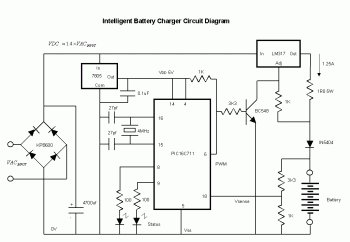This is the battery charger circuit for NiCd and NiMH battery tipe. The circuit is using microcontroller PIC16C711 for constant current supply. A constant current supply is switched on and off as required by a micro-controller. The microcontroller senses the battery voltage and internally uses an analog to digital converter to read the battery voltage. The microcontroller, requires its own 5V regulated supply and displays the current charging status on two LEDs. The smallest and cheapest micro-controller that could be used to perform the Analog to Digital function and still have the necessary functions and control lines to do this is the PIC16C711.
Visit this page for full explanation about this NiCd NiMH Battery Charger circuit

Comments